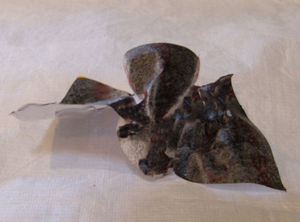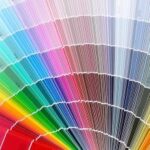Using Tyvek in art can add depth and dimension to your artistic creations. There are several very different uses for Tyvek, which is traditionally a home-improvement product, and artistic medium is just one of those.
What is Tyvek and why haven’t you seen it in your craft or art store?
Tyvek is best known as an insulating house wrap. It’s manufactured by DuPont and is found in the building materials section of home improvement stores such as Home Depot and Lowe’s. You can also find Tyvek in the form of painter’s coveralls in the paint section in home improvement stores, and envelopes in office supply stores such as Office Depot or Staples. It doesn’t appear to have been made in artist-friendly sheets yet, nor found its way into craft or art stores.
How do you use Tyvek in art?
When you buy it, Tyvek is white, but it can be easily painted or colored with a variety of materials, so that what you create with it can be customized and colored for the individual piece you’re working on.
I’ve used children’s watercolor paint, spray paint, and even crayons, and they’ve taken and held beautifully, both before and after the heating process.
What makes Tyvek fun and interesting to work with from an artistic point of view is what happens to it when heated. At around 200 degrees, Tyvek shrivels, twists, and curls, creating unique shapes and designs. A standard craft-style heat gun pointed at a piece of Tyvek will work its magic.
Start slow to see how it reacts to the heat, and play around to see what kind of shapes and forms you can create. Try heating both the back and front, or fold or twist it to get different effects. Unlimited possibilities is part of what makes Tyvek a great artistic medium.
Although I don’t recommend this for big projects or large pieces of Tyvek, if you don’t have a heat gun and want to experiment with Tyvek before committing to it, holding it over an electric burner will produce the same result as a heat gun. (Make sure to protect your hands and arms if you’re using this method.)
Once you’ve colored, molded, and shaped the Tyvek, attaching it to your canvas (or whatever you’re using-I’ve used art paper, photo paper, and even cardboard) is easy with standard craft glues. I’ve had success with spray adhesives on mostly flat pieces, and a glue-type adhesive on those pieces that have fewer and/or smaller surfaces that will be in contact with the canvas.
One of the most difficult things about using Tyvek in art is getting the Tyvek. As manufactured for its original purpose-house wrap-Tyvek is available in rolls. A 3 X 165′ roll sells in Home Depot for around $60. If you like working with Tyvek, and use large quantities, buying a roll might be the way to go.
But if getting a roll of house wrap isn’t for you, buying a pair of Tyvek coveralls can be a better choice: it’s less expensive, and easier to use. For about $10, you can get a one-piece coverall, which should provide you enough surface area to cut a piece big enough for just about any size project. A box of 50 envelopes at Office Depot costs around $30.
If you look beond the original use for Tyvek–as house insulation–you’ll discover there’s a whole creative world waiting to happen. Using Tyvek in your art offers you as many options as you have ideas.
Sources:
DuPont
Home Depot
Office Depot
Personal Experience



